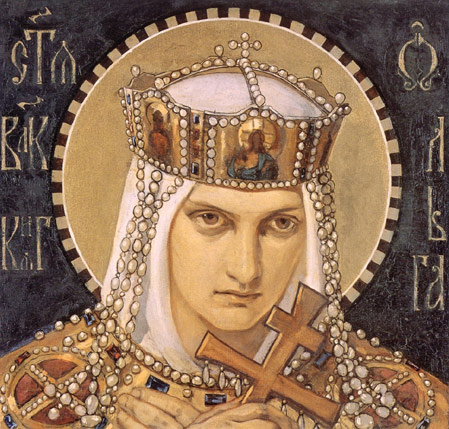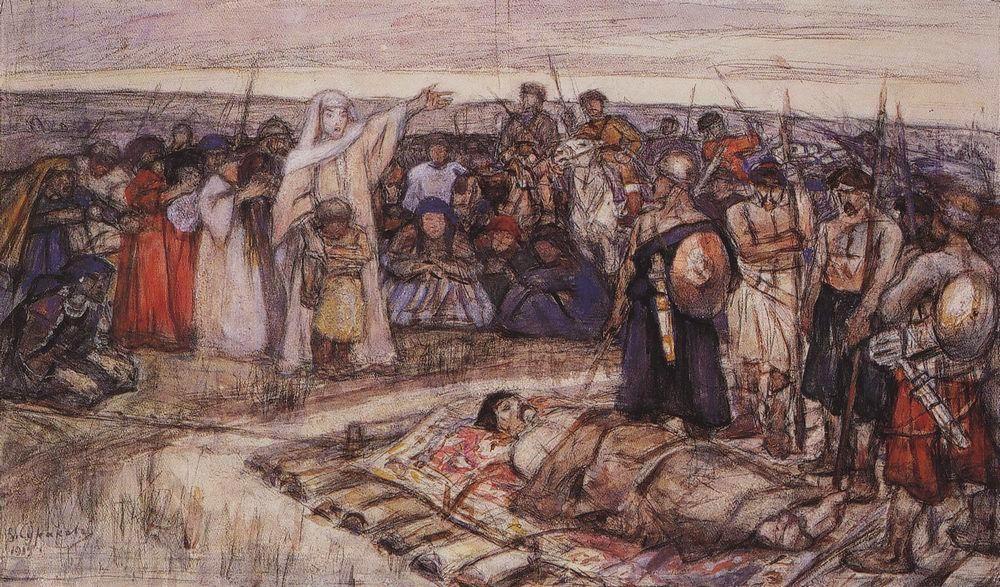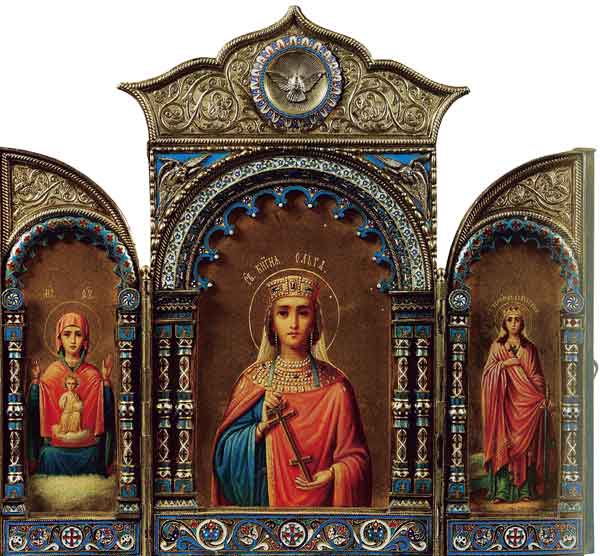Last updated on July 22nd, 2022 at 06:16 pm
We do not typically associate religious piety with vengeance, though revenge is a common thread throughout the Old Testament. It certainly isn’t usually associated with saints, which makes the life and career of St Olga of Kyiv somewhat peculiar.

This member of the royal house of Kievan Rus in the tenth century is honored today as a saint in the Eastern Orthodox Church, but she is also the patron saint of vengeance. So how exactly did she acquire her unusual distinction of being godly for being vengeful?
Olga of Kyiv
Olga was of Viking descent and is believed to have been born in the region around modern-day Pskov in north-western Russia sometime in the first quarter of the tenth century, most likely around 920.
At the time of her birth, the Viking or Norse people had been expanding massively across Eastern Europe for half a century, first by sending raiding parties down the great rivers of this region, the Dnieper, the Don, and the Volga, and then eventually by settling down and establishing towns and cities.
One of these was Kyiv on the Dnieper River in what is now Ukraine, a city that came to exercise enormous power over Eastern Europe following its foundation in the 880s. Eventually, the Vikings here became known as the Rus from the Finnish word Ruotsi, meaning Swedish.
We do not know precisely how it came about, but around 935, Olga ended up marrying the ruler of Kyiv, Prince Igor, who had been in charge of the city and its territories since 912. Thus, Olga of Pskov became Olga of Kyiv.
The Reign and Murder of Igor
Igor had overseen a substantial expansion of Kyiv during his reign. He expanded its rule over significant parts of Eastern Europe, extending northwards into Novgorod to the south of what is now Moscow and southeast towards the Black Sea and the Caspian Sea.
In the process, it became the dominant power in north-eastern Europe. The records are somewhat limited for the time, and we have to rely on the evidence of the Primary Chronicle, an annalistic history of Kievan Rus from its foundation to the end of the eleventh century.
It seems relatively clear that Igor even launched several attacks on Constantinople, the capital of the Byzantine Empire. This was one of the greatest cities in the world in medieval times, and it is an indication of how powerful the Norse rulers of Kyiv were by the mid-tenth century that Igor could lay siege to it to extract tribute from the emperors there.

In 943, Olga gave birth to her and Igor’s only son, Sviatoslav. However, Igor would meet a bloody death shortly afterward. In 945, while campaigning against the Drevlians, a neighboring Slavic tribe in Ukraine, he was taken captive, tortured, and murdered.
Olga’s Regency – Vengeance on the Drevlians
With the death of Igor, Olga now became regent of Kyiv for her son Sviatoslav. As he was just three years old at the time of his father’s death, it would be a lengthy minority, and Olga would rule Kyiv for many years on his behalf.
Her first goal was clear: to seek vengeance on the Drevlians who had murdered her husband. She was further enraged that they had rebelled after murdering the prince, invading Kyiv’s lands, and even sending an emissary to Olga proposing that she marry their ruler, Prince Mal.
The new ruler of Kyiv appeared to consider this at first when the Drevlian emissaries arrived, but the following day when they called to her court again, she had them carried away and buried alive as she watched.
War followed between Kyiv and the Drevlians. Throughout this, the Primary Chronicle claims that Olga engaged in a series of duplicitous actions and cunning measures to deceive the Drevlians and attack them in unusual ways.
For instance, it relates how she attacked one Drevlian settlement by unleashing a flock of pigeons over it, each carrying a small piece of sulfur and cloth that had been set on fire before releasing them.
The pigeons then dropped these makeshift bombs over the Drevlians’ homes, setting them ablaze. In this way did, she enact her revenge against the Drevlians, and when they were finally defeated, she sold those who were not dead already into slavery. It isn’t difficult to see how Olga got her reputation for vengeance.
Conversion to Christianity
Of course, this raises the question of how Olga became venerated as a saint. This is connected to her later life. In the early 950s, Olga traveled to Constantinople, the city her husband had laid siege on several occasions.
But Olga had come here for a different reason. She was visiting at the invitation of Emperor Constantine VII, and in the course of her visit, Olga converted to Christianity, renouncing the many Norse gods she had been raised to worship. She was also baptized in the Byzantine capital and returned to Kyiv, determined to convert her people.
St Olga
Olga’s efforts at converting her people met with mixed success. She certainly managed to foster Christianity amongst the Rus of Eastern Europe, but it was not a blanket conversion where these Norse people turned Christian overnight. Indeed, even her son, Sviatoslav, who began to rule Kyiv in his own right from the late 950s onwards, refused to convert.

But Olga did extract a concession from him which was enormously significant. While he would not convert, Sviatoslav promised his mother that he would not persecute any Christians on his lands. This reprieve from intolerance allowed the Christian faith to take root in Eastern Europe and grow over the next two or three generations.
By the time Kyiv reached its peak in the mid-eleventh century, it was being spoken of as a new Rome. Such was its significance in having fostered the spread of Eastern Orthodox Christianity throughout the lands of what are now Ukraine, Belarus, and western Russia. And in honor of her role in this, Olga came to be acknowledged as St Olga. Her feast day is the 11th of July, and she is considered the patron saint of vengeance because of the revenge she exacted on the Drevlians for murdering her husband.

